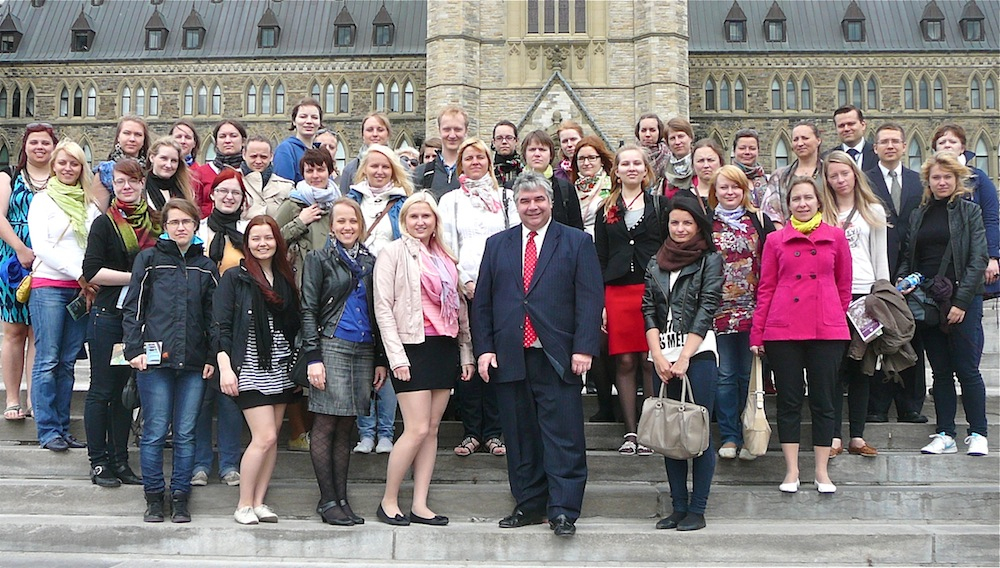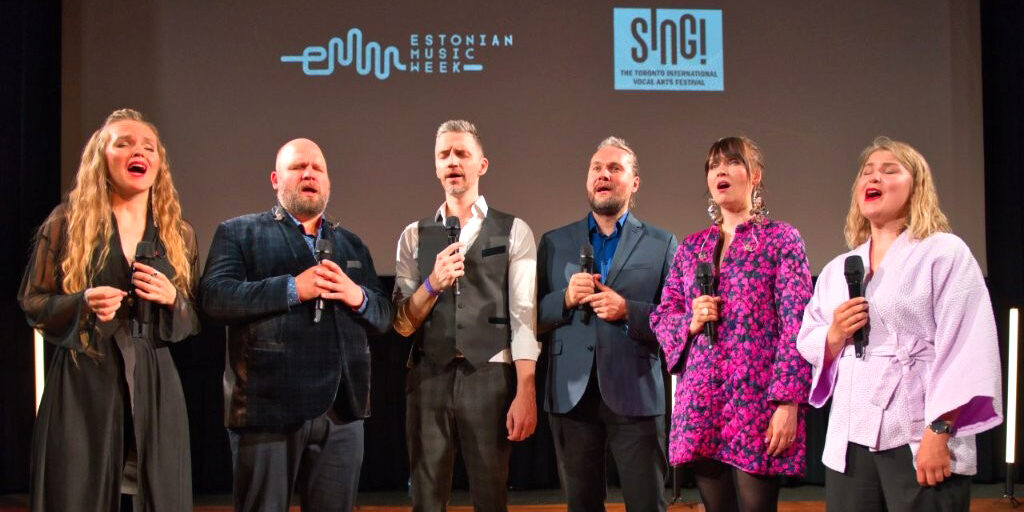The question arises: Did this just happen or was there a design? What is the background to this story? What were the main thrusts and factors?
The main thrust was a person who could easily represent the heart of Estonia. The only person who sang with the first-place choir at Riva del Garda (Italy) in 1990, Mae Juske was the heart and soul of the trip to Canada. While managing an ethnographic museum and genuine water-mill in Valgamaa (southern Estonia), she drives to Tartu for the twice-weekly rehearsals with the women's choir. There were enough believers in the choir who joined Mae in her vision and who felt a trip to Canada was a possibility.
The seeds were sown in April-May 2011. Proposals were made in August-September. The tour was essentially designed in Canada. The main issue was accommodations for 45 choristers. These determined the dates for the tour. Tartu College was still offering special summer rates beginning the second week in May. Subsequently, May 12 was immediately booked at Estonian House followed by the only available date at MacMillan Theatre, later cancelled, when choir participation in the tour dropped to 33 singers. A new venue was soon found. Seedrioru with its memorial monument was seen as the concluding chapter. These three factors – home base, main performance dates, conclusion – formed the base of the design. The other events simply fell into place.
What turned into a representation of global Estonians at the choral conference in Canada's capital was being in the right place at the right time. The Tartu choir needed advertising in the Choirs Ontario (formerly Choral Federation) web-site and newsletter. Reet Lindau Voksepp, one of the first individual volunteers working with the local Estonian co-ordinator, set up and paid for membership of Estonian choirs in Choirs Ontario through being the head of the Estonian choral federation. She was asked if the Tartu choir would be willing to sing in Ottawa.
Ottawa was not the only possiblility during the concert tour. Ouvertures came from the Estonian Embassy in Washington to sing at a high-level conference in Chicago. A girls' choir in Montreal wanted the Tartu group to join them there. Ottawa prevailed, thanks to an opening left by a choir which had to pull out of the Podium 2012 celebration. A workshop on Estonian choral music was added to the mix. Ottawa was the best place to be after the Toronto performances. Having an Embassy to visit and local supporters to meet did not hurt.
Financing for the tour was done in Estonia, the main support coming from the University of Tartu, which covered the cost of accommodations and the main concert venue. The travelling members paid for most of their travel costs, with the choir's own bank account backing up expenses. Tartu College played an important role, having a music department in its cultural programme. This became the official organizer for the tour. Tartu College also covered cost of concert programs and Estonian advertising. The academic organizations covered the costs of the official reception. Transport to and from Ottawa, Niagara, Seedrioru and the airports was eventually covered by revenue from the main concert.
Early feedback from the choir members reflects amazement at the vibrancy of the Estonian communities in Canada. They responded warmly and deeply to individual acts of kindness such as three huge trays of nourishment prepared by the Estonian House café for the trip to Ottawa. If the receptions by the Toronto choirs started cultivating relationships, the visit to Seedrioru cemented them. No one wanted to leave the house on top of the valley and the people who received them so enthusiastically. The waving hands and smiling faces sticking out of the bus windows left a poignant memory of the event and of the whole tour as well.
Andres Raudsepp




